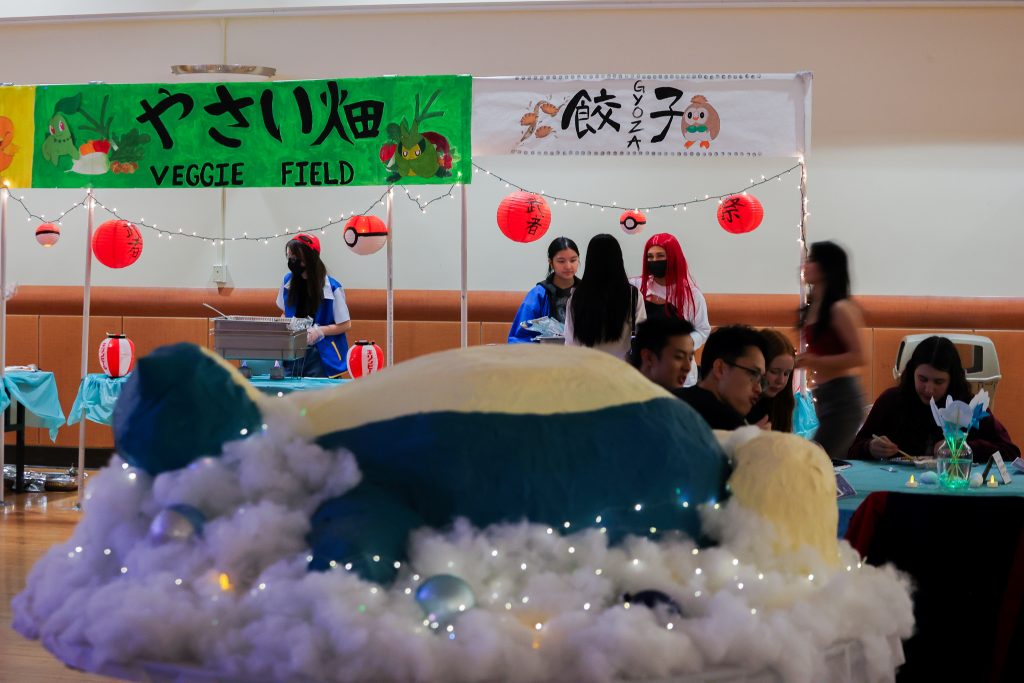
This past Sunday, the Binghamton University Japanese Association (BUJA) hosted their second annual Winter Matsuri in the Mandela Room.
Matsuri, which translates to festival in Japanese, can be celebrated both religiously and culturally. Matsuris typically revolve around commemorating a change in season or celebrating a holiday. This year, BUJA’s Winter Matsuri was Pokémon themed.
Kelcie Alba, one of BUJA’s event coordinators and a junior majoring in Japanese studies, explained the inspiration behind the event.
“Bringing a traditional, Japanese-style festival to [Binghamton] helps celebrate Japanese culture in a calm and fun setting,” Alba wrote in an email. “Not only that, but hosting a festival helps show our flexibility as an organization and widens the variety of events that we host. We like trying new things and sharing different aspects of Japanese culture, and we thought this would be a great way to do so.”
Upon entering, attendees were transported to a winter wonderland. Paper-made rocks with tea light candles lined the Mandela Room, along with snow-covered paper trees and several red torii — gateways that symbolize the passage between the everyday world into the sacred.
There were also many other artistic pieces such as a Pokémon Matsuri scene, a winter blossom balloon arch, a Japanese bridge and a sleepy Snorlax sculpture, all designed for memorable photos.
The event featured a variety of games such as misanga bracelet making, kitsune mask decorating, capsule scooping and more.
Guests also had the opportunity to stop by two pop up shops — Yume’s Yume Booth and Ruby’s Lab.
Yume Igarashi, owner of Yume’s Yume Booth, one of BUJA’s art directors and a junior majoring in integrative neuroscience, described the reasoning behind opening her own shop.
“I like to make arts and crafts and when I make stuff, I make too much for myself,” Igarashi said. “I like sharing stuff in general. I think it’s nice when I’m enjoying myself but also able to make everyone else feel like they can choose their own jewelry — especially if it’s accessible on campus as well.”
Alba identified the wide selection of booths and crafts as her favorite aspect of Winter Matsuri.
“This year we are introducing some new booths and also keeping some of the ones we had last time,” Alba wrote. “It gives our general body the ability to see different features of Japanese festival culture and also [getting] to meet our [E-Board].”
Along with games and activities, there were many food stalls to choose from including chicken teriyaki, fried rice, mixed vegetables, gyoza and yakisoba — a fried noodle dish. There was also hot chocolate and green tea available for guests to enjoy.
When asked about the process behind putting together the event, Igarashi described BUJA’s hard work and dedication.
“Every single part of the decorations and setup we came up with,” Igarashi said. “We decorated. We met up on weekends and kind of put this together for months. It’s really very nice where every step of the way, you appreciate everything that went into it, and you kind of remember the process of painting on the floor and things like that for every little thing. And I get to visually see everybody enjoy themselves, so that’s really nice in an event that you’re hosting.”
Alba illustrated what she hopes attendees take away from the event.
“I hope attendees feel as though they are inside a real Japanese festival,” Alba wrote. “We made sure to keep it similar to the real experience of going to one, so I hope that is felt by everyone who walks through the door.”


